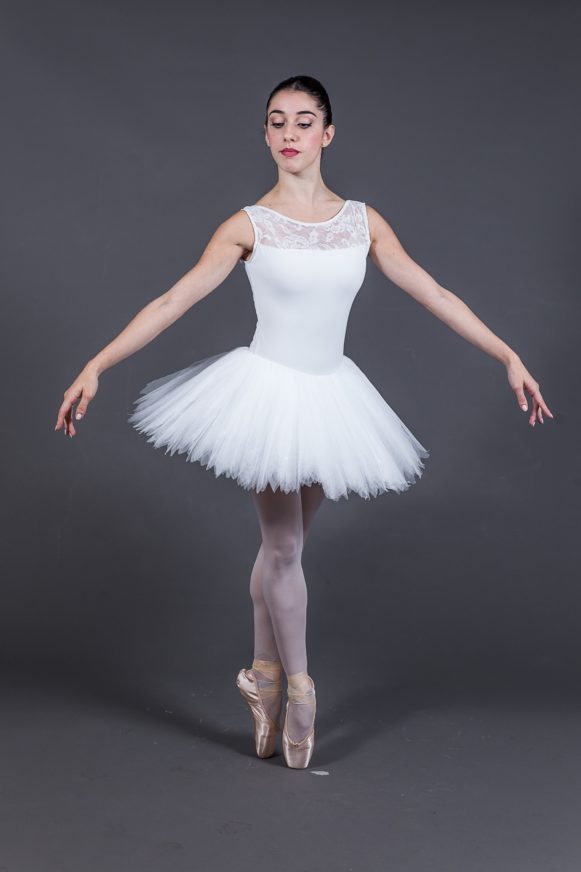How to choose the toe shoe?
For every aspiring ballerina, choosing and fitting a pointe shoe is a symbol of reaching a goal.
Toe shoes should therefore be evaluated very carefully taking into account a number of technical variables:
In fact, one must consider not only the quality of the product but also its adaptability to the specific foot of the dancer.
We list the most important features below:
1) Hardness of the sole
For the first few periods, it is best to prefer a soft sole that facilitates climbing at the toe and at the same time provides support once you get on.
For dancers with a “very pronounced” instep, it is preferable to opt for a stiffer sole now.
In fact, in this case the foot will need more support from the shoe.
2) Plant width
The pointe shoe should have a more square sole that will provide more comfort for those who are not used to wearing this type of shoe.
In fact in the early days the pointe shoe tends to hurt the toes of young dancers .
The square sole also allows for more stability when stepping on the toe because the surface area on which the toe rests is larger.
To avoid the annoying toe ache, it is also good to wear a layer of thin fabric called a toe protector inside the toe shoe:
The toe guard will serve to protect the foot from rubbing during movement and consequently prevent blisters.
There are two types of tip protectors:
A more economical foam toe protector that is ideal for those who only wear toes for one or two hours a day.
A more comfortable silicone toe-guard that provides greater foot softness for those who must wear the shoes for several hours at a time.
3) Height of the template
The toe mask is the part of the toe shoe that covers the toes and can be wider or narrower as needed.
For the first few toe climbs, it is preferable to opt for a medium jig, that is, one centimeter covering beyond the toes.
The template is used to keep hold of the foot and to support it when going up the toe to avoid what is called “going over” in technical jargon.
This thus prevents the risk of catching sprains during training.
For those with very weak feet or those prone to flatness, a lower template as leaving the instep freer helps more to get on the toe.
Conversely, for stronger feet or those with greater instep, a taller template can be opted for from the outset.
4) Tip tape
Combined with an elastic band to be sewn into the shoes, the tape will serve to hold the shoe firmly in place at the ankle.
This facilitates movement and provides more stability to avoid sprains.
Nylon ribbon is always preferable to satin both because it tends less to slip and because it is more neutral in coloring.
Fun facts about the toe shoe….
Is it always necessary to sew the toe shoe ribbon?
Sometimes professionals depending on the ballet they are performing may choose not to sew the ribbons but only the elastic.
This choice is related both to an aesthetic fact and because depending on the choreography they can more quickly remove the shoe.
For beginners, not sewing ribbons is very risky because you risk getting sprains on your feet so it is always recommended to wear them.
We suggest you read this article on
How to prepare the toe shoe.
How to distinguish the right tip from the left tip?
Pointe shoes do not have marked which is the right and which is the left, so to distinguish them we suggest a trick.
When you buy the toes put them next to each other, and you will notice that at the height of the sole of the foot at the side of the shoe, the toe shape is more cleated.
The cleated part of the shoe always dresses the inside of the reference foot.
Therefore in the shoe of the right foot the inside of the neckline will be on the left, and in the shoe of the left foot the inside of the neckline will be on the right.
